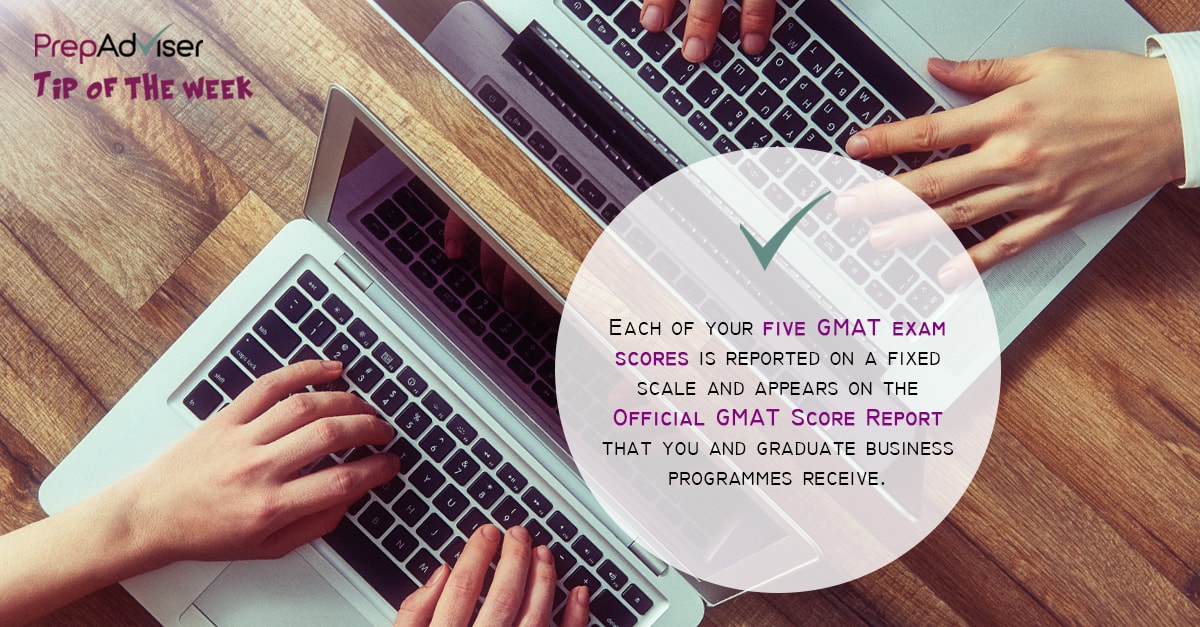The GMAT is a four-part exam testing verbal and mathematical skills, analytic writing ability, and, since 2012, integrated reasoning. Depending on background, predisposition and numerous other factors, the verbal section may be your strong suit, while the mere thought of math problems, even simple ones, nauseates you. Or it may be the other way around.
When asked about the most difficult GMAT questions, however, the majority of business school applicants who sit down to take the exam point to the Data Sufficiency and Critical Reasoning sections.
Find the MBA that suits you best.
PrepAdviser has therefore decided to offer you a few tips for beating the GMAT, placing an emphasis on these two sections.
When speaking of difficult GMAT questions, bear in mind that this is a computer-adaptive test, meaning that questions answered correctly are followed by more difficult ones, while wrong answers are followed by easier questions. Once you answer a question, you can’t go back to it.
The Analytical Writing Assessment (AWA)
This section measures your ability to think critically and to communicate your ideas. Here, you will be asked to write an essay in which you will analyse the reasoning behind a given argument. You will have 30 minutes to complete the essay.
How can you master the AWA section? First, take a look at several AWA templates in order to get an idea of how to structure your essays. Then, take a look at topics of past AWA essays. Within the 30 minutes you will have at your disposal to complete your essay, ensure you spend the first 5 minutes giving the general idea of your argument and the last 25 writing the essay. You can practise outlining arguments using the topics of the past essays. Try to spend no more than 5 minutes for each outline. Once you master the outlines, try to write full essays. The more you practise the better.
Integrated Reasoning (IR)
The GMAT underwent a major change in June 2012. GMAC, the organisation that administers the exam, added the Integrated Reasoning (IR) section which is designed to test the ability to evaluate and synthesize data from various sources presented in a number of different formats, and to predict plausible and probable outcomes. The IR section replaced one of the AWA essays.
The logic behind the inclusion of the new section is that managers need to analyse all kinds of data in a data-driven world. Since the GMAT strives to test the skills that matter most to today’s employers, GMAC thought it would be useful to introduce a section that tests data evaluation skills.
Here are a few tips for cracking the IR section. If you see a table, a graph, or a chart, quickly make a mental note of the relationship between the variables. You should also know that the data you need to solve IR questions is on the various screens: you just have to know where to look. Make sure you are looking at the right table, graph, chart, or part of the passage. To solve trickier IR questions you will have to use more than one screen. Don’t ignore the screens and go straight to the questions. Instead, try to memorise the data and pay attention to all the small details such as any small print near the data and even footnotes. Taking a cursory glance at the data won’t work in the IR section. Don’t forget to note the units (mph, m/sec, cm2, etc.) and always ask yourself what the data is telling you.

Quantitative
The Quantitative section measures your ability to analyse data and draw conclusions using reasoning skills. According to GMAC, the mathematics needed to understand and solve the questions in this section of the GMAT exam is no greater than what is generally taught in secondary school classes. However, don’t let this statement fool you.
There are two maths question types in the Quantitative section. The first type, Problem Solving, represents normal five-answer multiple choice questions that appear on most standardised tests. No big surprise there.
The Data Sufficiency question type, however, is another matter. As Veritas Prep puts it:
Perhaps no GMAT item is as emblematic of the test as is a Data Sufficiency question. It’s an iconic question format, unique to the GMAT and true to the aims of this specific test: to reward those who show the higher-order reasoning skills that will lead to success in business.
All Data Sufficiency problems look the same: you are asked a question and you are given two mathematical statements. You then have to evaluate whether the statements offer enough information to answer the question. You don’t need to give the answer to the actual question, just find out whether the available data is sufficient for answering the question.
If you want to do well on Data Sufficiency questions, you have to memorise the five answer choices. They are always the same:
- Statement 1 alone is sufficient but statement 2 alone is not sufficient to answer the question asked.
- Statement 2 alone is sufficient but statement 1 alone is not sufficient to answer the question asked.
- Both statements 1 and 2 together are sufficient to answer the question but neither statement is sufficient alone.
- Each statement alone is sufficient to answer the question.
- Statements 1 and 2 are not sufficient to answer the question asked and additional data is needed to answer the statements.
In Data Sufficiency, it’s vital to remember that you should not focus on finding the answer to the problem. The main question here is: Can you find the answer? That’s why you have to focus on the sufficiency question. This leads us to the next tip: Don’t waste time calculating the exact answer if you don’t have to.
Check out: GMAT Data Sufficiency Question Type (Video)
According to Mike McGarry from Magoosh, test takers, especially those who haven’t thought about maths for a while, should be more flexible when they think about numbers. The creators of the GMAT love to test number properties, and one of the principal reasons for this is that people without number sense make all kinds of predictable mistakes. The statement might say, for example, x > 7, and people will read that and assume in hordes that x must be 8 or more, totally forgetting that there is an entire continuous infinity of decimals between 7 and 8.
Verbal
The GMAT exam showcases all of your skills – not just maths. The Verbal section measures your ability to read and understand written material, to evaluate arguments, and to correct written material to conform to standard written English.
This section consists of Reading Comprehension, Critical Reasoning, and Sentence Correction.
The Reading Comprehension section, with its sophisticated, academically-inflected English, can be difficult for some. To prepare yourself for the GMAT Verbal section, and for Reading Comprehension in particular, you should read a lot. Don’t shy away from books, magazines, and newspapers. Prefer publications notable for their use of advanced English such as the New York Times, the Economist, and Reuters (especially its commentary page). It’s also important to note that Reading Comprehension is all about active reading. Usually, when we read, we don’t interact with the information. We don’t try to notice the structure of the text, for example. As you prepare for the Verbal section, you should make a habit of spotting the main idea of each passage, determining the author’s position and tone, and figuring out the structure of the text.
GMAT Sentence Correction questions test your knowledge of grammar, style, and overall sentence structure in written English. Test takers usually have to deal with 14 or 15 Sentence Correction questions. To do well in this section, you need to be familiar with the following grammatical areas: verb tenses, subject/verb agreement, modifiers, comparisons and parallelism, pronoun usage, and idioms. You may think that this is too much, and it is, but if you don’t have enough time to prepare you can focus on the elements that will most certainly appear in the test, such as:
- Subject-Verb agreement questions, where you have to make sure the two elements agree in quantity and tense
- The relationship between pronouns and antecedents. These issues are similar to Subject-Verb agreement problems
- Idioms
In the Critical Reasoning (CR) section, you will find about 13 questions. Each question contains an argument which you need to analyse in order to strengthen it, weaken it, find its underlying assumption, etc. CR makes up one-third of the Verbal section.
You may be wondering why the GMAT contains such an exercise. The fact that you are considering sitting for the test implies that you are aiming at a career in the business world. The business world is based on buying and selling, and every sale is an argument in a sense. Just one example: in order to sell a product, you need to convince the prospective buyers that the product is worth it and they will benefit from buying it. Managers usually deal with all kinds of arguments every day. The GMAT, therefore, wants to test their ability to weaken or strengthen arguments.
Check out: GMAT Critical Reasoning Question Type (Video)
But how should you go about solving CR problems? The best strategy is to read the question first and the paragraph second. Let’s say you are supposed to weaken an argument. Once you know the question, you can read the paragraph more sceptically, in an "I’m-not-buying-it" mode. You are thus building the information from the text on top of your objective within the question. Using this strategy will keep you focused on your main objective. If your objective is to weaken an argument, then you can start looking for flaws in the argument while you are reading the passage. If you read the passage first, then you are going through some random information with no real purpose.
In the CR section, some sentences are intentionally confusing. That’s why it’s a good idea to try to simplify the language. You can simplify the language used in a question by using your own words.
The GMAT is a long and complex exam which tests a wide range of abilities that business professionals should possess. For some, the most difficult GMAT questions may be in the Quantitative section, for others, in the Verbal section. Whatever the case may be, just remember that practice makes perfect.




